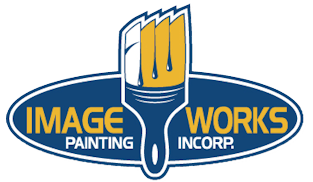Brick, Block & Concrete Painting - Making It Stick
Jeremy Holderness Maybe the Third Little Pig was on to something with the whole brick idea. I'm not implying that building your house out of straw or wood won't keep the wolves at bay, but masonry building materials are certainly a strong, attractive choice, and -- when properly cared for -- can withstand just about anything that nature can throw at them.
Maybe the Third Little Pig was on to something with the whole brick idea. I'm not implying that building your house out of straw or wood won't keep the wolves at bay, but masonry building materials are certainly a strong, attractive choice, and -- when properly cared for -- can withstand just about anything that nature can throw at them.
Even if your house is not covered in brick, nearly every home incorporates either poured concrete, cement block, or an engineered cementitious product into its construction (i.e. basement walls, Hardie-Board siding, foundation walls, concrete porches, etc.) Many of those surfaces are exposed to the outdoor elements and they have to be protected from the harsh environment if you want them to last. But painting is not a one-size-fits-all kind of job, and masonry surfaces must be treated very differently than wood, vinyl, aluminum, or other materials.
Problems With Coating Masonry Surfaces
Aside from the normal surface preparation that needs to be done prior to any exterior painting (i.e. cleaning, scraping, patching cracks) brick, block, and concrete painting have some special considerations that need to be recognized.
According to the Masonry Institute of America, efflorescence is a fine, white, powdery deposit of water-soluble salts left on the surface of masonry as the water evaporates. These unsightly deposits commonly occur as the water in the concrete or mortar-mixes makes its way to the surfaces and evaporates as the masonry is going through its initial curing phase, leaving behind the salts. This can happen as a part of the curing process for up-to one year after construction (known as primary efflorescence.) However, it can also happen any time that water is allowed to penetrate into the surface and start the process all over again (known as secondary efflorescence.)
Either way, if you discover that you have efflorescence on the surface of your masonry it can be removed with a wire brush or low-pressure washing, followed by a thorough rinse of the surface with clean water.
Now that we've addressed the issue of efflorescence and how to remedy it, what this tells us about masonry surfaces is that they must be protected from the elements the same as any other type of building material -- by either painting or sealing the surface. No matter which of these types of products you choose, it is imperative that you choose one which is designed for your particular application if you want it to last.
pH Level
The pH level is the measurement on a scale from 0-14 (with 7 being neutral) of the pH of the surface being tested. A measurement of 0-6 indicates acidity, and values from 8-14 indicate alkalinity. Newly-constructed masonry will naturally have a high pH level, which creates a situation where normal paints and primers cannot be successfully applied. Attempting to apply regular paints and primers to uncured substrates with high pH levels usually results in condition known as alkali burn, and will ultimately lead to failure of the coatings.
The rule of thumb has always been to wait a minimum of 28 days after construction for any masonry surface to sufficiently cure before applying any coatings, but there is no guarantee that high pH levels won't still be present.
So after 28 days you could conduct one of a variety of different tests to attempt to determine the pH level of the surface, but some test are certainly more accurate than others -- and in the hands of the untrained homeowner, even the most-accurate of tests are by no means fool proof.
But in reality most DIY painters will have little interest in going through the process of testing anyway, let alone going through the proper steps of subsequently reducing the surface pH if they discover that it is elevated.
So the most common question we hear when folks are painting masonry surfaces is: "What can I do so I don't have to worry about all of that technical stuff?"
And the solution is the same as it is efflorescence: choosing the right product to use can make all the difference.
Form-Release & Curing Agents
Unlike other building materials, masonry products incorporate some type of a wet mix in their construction, and when those surfaces are constructed, special compounds are added to the wet mixes to aid in the curing and sealing of the structure.
In addition, concrete requires the use of forms to mold the wet mixes into the desired shape until they can be removed once the mix has dried and is strong enough to stand on its own. So form-release products are used to make it possible to remove the forms without damaging the concrete -- much like greasing your pan when you bake a cake.
These additives should be removed from the surface as they can interfere with the adhesion of your coatings. Depending on what types of compounds were used and the age of the structure, this can involve anything from a pressure cleaning using a specialized detergent additive, to the use of a chemical solvent or a cure-and-seal remover.
If you believe that your surface either doesn't have the products on it, or enough time has passed since their construction that it will not be an issue, you can always apply a test patch of your coatings and then perform an adhesion test to make sure they're going to stick.
What Are The Right Products To Use?
Above-Grade Masonry Surfaces
Many paint manufacturers have a line of coatings that are dedicated to protecting and beautifying vertical, above-grade (anything above the ground) masonry surfaces. For the purpose of this article we will restrict this conversation to my favorite of these coatings, which is the battle-tested Loxon line by Sherwin-Williams. Adding these products to your arsenal will enable you to confidently coat these surfaces without having to become a masonry expert.
- Loxon Concrete & Masonry Primer - This is generally the go-to product when you're painting any type of masonry. It seals and adheres to concrete, block, plaster, brick, stucco, fiber cement siding and EIFS exterior insulated siding. It is highly efflorescence resistant and can be applied to surfaces with a pH as high as 13, which means you can use it on masonry that has been curing for a minimum of just 7 days. It should be topcoated with a high-quality 100% acrylic paint.
- Loxon Block Surfacer - If you're painting a masonry surface that's more porous, such as a concrete block wall, you may want to consider using the Loxon Block Surfacer. It has the same characteristics as the Loxon Concrete & Masonry Primer but is much better at filling pinholes and pores to create a smooth surface for paint.
- Loxon Conditioner - This thin, penetrating sealer is ideal for coating smooth concrete or for bonding light chalk to the surface. However, it does not provide the high level of efflorescence resistance that the other two products do. So it is advisable to follow it up with a coat of the primer or the surfacer prior to your finish coat, or simply topcoat the conditioner directly with the Loxon Masonry Topcoat.
Below-Grade Masonry Surfaces
Below-grade (anything below the ground -- usually a basement) products are a bit of a different story, so you'll be looking for a different set of performance characteristics in a product for this application. The main concern here is not only making your basement look pretty, but stopping the ground water from making its way into your living space.
There is no interior coating that's a substitute for a basement having been properly waterproofed from the outside of the home. The problem is that this should be done during the construction of the basement before the fill dirt is added to conceal the outside of the walls, but many builders tend to cut corners when waterproofing or they use inadequate products, such as a hardware-store-grade of foundation coating -- which simply won't hold up.
With that said, your best option for this task is a product that is designed to hold back hydrostatic water pressure (or the force of water standing behind something -- in this case we're talking about ground water).
One user-friendly product that we like very well is UGL Drylok Masonry Waterproofer. When applied correctly it will leave your basement walls with a lightly-textured finish and do an outstanding job of keeping the area dry.
Some things to consider is that Drylok is only truly effective when it is applied directly to the masonry surface, not over previously-painted surfaces. It can also be a bit labor intensive, as the first coat must be applied using a stiff-bristle brush to aggressively work the product into the pores and pinholes of the surface to seal it up. The subsequent coat(s) can be applied by roller. Special attention should also be paid to sealing the joint where the wall meets the floor with a hydraulic cement before you apply the Drylok Waterproofer.
Garage & Basement Floors
This article has been focused on painting vertical surfaces. But what if you're looking to coat your garage or basement floor? Do these coatings also work for that application?
We could devote an entire article to that topic...and we have...two in fact. They're called What's The Best Garage Floor Coating To Use? and Enhance Your Home's Curb Appeal With Concrete Staining.
If you're located in the Greater Pittsburgh or Western Pennsylvania areas and you would like to receive a free consultation and quote for your brick, block, or concrete painting project please give us a call at 724-898-2446 or 412-835-2446, or click on the button below to have us contact you.
photo by: Suzie Tremmel / CC BY 4.0








